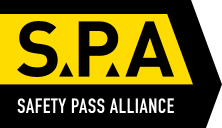Construction firms sentenced after culvert collapse
- Date:
- 22 January 2016
Two building companies have been fined after a man was seriously injured when a structure that allows water to flow under roads collapsed on him.
Maidstone Crown Court heard that Kent County Council appointed Enterprise to replace an old, damaged, brick culvert under Tudely Lane Tonbridge. Enterprise in turn appointed Topbond to do the majority of the work.
A culvert is an embedded structure, usually surround by soil and can be made from steel, brick or reinforced concrete or other material and is used to transport water underground from one side of a road or railway to another.
The Health and Safety Executive (HSE) prosecuting told the court that on 27 January 2012 water was being pumped out of the work area when three workers including 63-year-old Michael Skitt of Kingsnorth, Ashford, entered the area between two culverts in order to clear a channel for the remaining water to flow toward the pump head.
They had begun to clear loose material, but had not started digging.
Shortly after they entered the area, the old brick culvert collapsed. One man jumped clear, another was hit but managed to release himself, but Michael Skitt was trapped and injured.
Mr Skitt suffered multiple injuries including shoulder blade breaks, an open shin break and a dislocated knee. Ongoing issues with his foot may see him need further operations. Mr Skitt spent 26 days in hospital and has now had to give up full time work and walks with a stick.
HSE said the stability of the structure was not assessed adequately, nor sufficient planning undertaken to ensure adequate control measures were in place.
Its investigation found that originally the old culvert was to be totally demolished early in the work, when this was changed the implications of uncovering half of the damaged culvert and therefore loading it unevenly and undermining it were not managed.
Although culvert repair/replacement is a relatively unusual construction job, the collapse of excavations and structures is common and the court heard the defendants in the case were made aware of the potential of collapse by the original designers/engineers several times.
The culvert could have been demolished early in the work, failing this, there are a number of commonly used ways to support structures during construction work.
Enterprise (AOL) Ltd of the Sherard Building, Edmund Halley Road, Oxford admitted breaches of section 22 (1) and 28 (1) of the Construction (Design & Management) Regulations 2007. They were fined a total of £90,000 and ordered to pay an additional £22,876 costs.
Construction firm Topbond PLC, of Oyster Quay, Castle Road, Sittingbourne, Kent admitted breaches of section 13 (1) and 28 (1) of the same regulations. They were also ordered to pay £22,876.60 costs and were fined £70,000.
After the case, HSE inspector Nicola Wellard said: “This is a sad case that has changed at least one man’s life for ever. The culvert was being replaced because it had been damaged previously.
“Just this one piece of information should have been enough to ensure both contractors assessed the stability of the culvert throughout the work and took appropriate measures to ensure people were protected from the risk of collapse. These risks are well known and the fact that the two other men escaped without serious injury was just pure luck, this could easily have been a multiple fatality.”
Notes to Editors:
- The Health and Safety Executive (HSE) is Britain’s national regulator for workplace health and safety. It aims to reduce work-related death, injury and ill health. It does so through research, information and advice, promoting training; new or revised regulations and codes of practice, and working with local authority partners by inspection, investigation and enforcement. www.hse.gov.uk[1]
- More about the legislation referred to in this case can be found at: www.legislation.gov.uk/
 [2]
[2] - HSE news releases are available at http://press.hse.gov.uk[3]



















